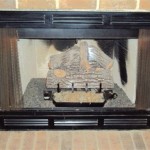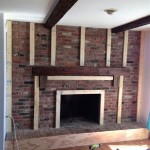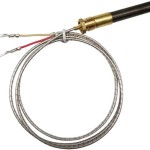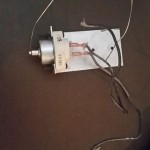Can You Resurface a Brick Fireplace? Exploring Options and Procedures
Brick fireplaces, often the focal point of a room, can become dated, stained, or damaged over time. Instead of a complete demolition and rebuild, resurfacing offers a viable option to revitalize the fireplace's appearance. Resurfacing involves applying a new layer of material over the existing brick, effectively creating a fresh aesthetic while retaining the fireplace's structural integrity. This process can be less expensive and less disruptive than a full replacement, making it an attractive choice for homeowners seeking to update their living space.
The feasibility of resurfacing a brick fireplace depends on several factors. The condition of the underlying brick is paramount. If the brick is crumbling, severely cracked, or structurally unsound, resurfacing might only mask a deeper problem and could lead to further deterioration. In such cases, repairs or even complete removal and replacement might be necessary. A thorough inspection of the existing brickwork is essential before committing to a resurfacing project. This inspection should include checking for loose bricks, damaged mortar joints, and any signs of water damage or structural compromise.
Furthermore, the desired aesthetic plays a significant role in determining the appropriate resurfacing method. Different materials and techniques offer a range of visual outcomes, from a modern, smooth finish to a more rustic, textured appearance. The homeowner's preferences and the overall style of the room should guide the selection of the resurfacing material. It is also important to consider the long-term maintenance requirements of the chosen material, as some surfaces may require more frequent cleaning or sealing than others.
Assessing the Condition of the Existing Brickwork
Before embarking on any resurfacing project, a comprehensive assessment of the existing brickwork is crucial. This assessment involves a visual inspection to identify any signs of damage, such as cracks, spalling (flaking or crumbling of the brick surface), or loose mortar joints. A close examination of the mortar is particularly important, as deteriorated mortar can compromise the stability of the entire structure. If the mortar is soft, powdery, or missing in sections, it will need to be repointed before any resurfacing work can begin.
The presence of efflorescence, a white, powdery deposit on the brick surface, indicates moisture intrusion. Addressing the source of the moisture is essential before resurfacing, as the problem will likely persist and damage the new surface. This may involve repairing leaks in the chimney, improving drainage around the foundation, or applying a waterproof sealant to the exterior of the chimney.
The condition of the firebox, the interior of the fireplace where the fire burns, also needs to be evaluated. If the firebox is damaged, it may require repairs or replacement before resurfacing the exterior of the fireplace. The firebox is subjected to extreme temperatures and thermal stress, which can cause cracks and deterioration over time. Failing to address these issues can compromise the safety and efficiency of the fireplace.
Popular Resurfacing Options and Their Application
Several materials can be used to resurface a brick fireplace, each offering a unique aesthetic and application process. Some of the most common options include:
- Thin Brick Veneer: Thin brick veneer consists of thin slices of brick that are adhered to the existing brick surface. This option provides the look and feel of real brick without the added weight and expense of a full brick installation. Thin brick veneer is available in a variety of colors, textures, and sizes, allowing for a wide range of design possibilities. The application process typically involves applying a layer of mortar to the existing brick and then pressing the thin brick veneer into the mortar.
- Stone Veneer: Similar to thin brick veneer, stone veneer consists of thin pieces of natural or manufactured stone that are adhered to the existing brick surface. Stone veneer offers a more rustic and natural look than brick, and it is available in a variety of stone types, colors, and textures. The application process is similar to that of thin brick veneer, requiring a layer of mortar to adhere the stone to the existing brick.
- Concrete Overlay: Concrete overlay involves applying a thin layer of concrete over the existing brick surface. This option provides a smooth, modern look and can be tinted or textured to achieve a variety of desired finishes. Concrete overlay is typically applied in multiple layers, with each layer being allowed to dry before the next is applied. This process requires careful preparation of the existing brick surface, including cleaning and roughening the surface to ensure proper adhesion.
- Tile: Tile is another popular option for resurfacing a brick fireplace. Tile is available in a wide range of materials, colors, and patterns, allowing for a high degree of customization. The application process involves applying a layer of thin-set mortar to the existing brick surface and then setting the tiles into the mortar. Grout is then applied between the tiles to fill the gaps and create a waterproof seal.
- Plaster or Stucco: Plaster or stucco can be applied over the existing brick surface to create a smooth, textured finish. This option is often used to create a more traditional or Mediterranean look. The application process involves applying multiple layers of plaster or stucco to the brick surface, with each layer being allowed to dry before the next is applied. This process requires skill and experience to achieve a smooth, even finish.
The choice of resurfacing material will depend on the desired aesthetic, the condition of the existing brickwork, and the homeowner's budget and skill level. It is important to research the different options carefully and to consult with a professional if needed.
Preparation and Application Best Practices
Proper preparation is essential for a successful resurfacing project. Regardless of the chosen material, the existing brick surface must be thoroughly cleaned to remove dirt, dust, grease, and any loose or flaking material. A wire brush or a pressure washer can be used to clean the brick, depending on the severity of the dirt and grime. If there is any mold or mildew present, it should be treated with a bleach solution before cleaning.
Any damaged mortar joints should be repointed before resurfacing. Repointing involves removing the old, deteriorated mortar and replacing it with new mortar. This process helps to stabilize the brickwork and provides a solid base for the new surface. The new mortar should be of the same type and consistency as the existing mortar to ensure compatibility and prevent further damage.
Before applying the resurfacing material, it is important to prime the brick surface. A primer helps to improve adhesion and prevents the resurfacing material from being absorbed into the brick. The type of primer will depend on the chosen resurfacing material, so it is important to follow the manufacturer's instructions. For example, a bonding agent might be recommended for concrete overlay, while a latex primer might be suitable for plaster or stucco.
During the application process, it is important to follow the manufacturer's instructions carefully. This includesusing the correct mixing ratios, applying the material in the recommended thickness, and allowing sufficient drying time between coats. It is also important to work in a well-ventilated area and to wear appropriate safety gear, such as gloves, eye protection, and a dust mask.
After the resurfacing material has been applied, it may be necessary to seal the surface to protect it from moisture and stains. The type of sealant will depend on the chosen material, so it is important to consult with a professional or to research the different options carefully. Some sealants are designed to enhance the color and texture of the surface, while others are designed to provide a durable, waterproof barrier.
Resurfacing a brick fireplace can be a rewarding project that transforms the look of a room. By carefully assessing the condition of the existing brickwork, choosing the right resurfacing material, and following proper preparation and application techniques, homeowners can achieve a beautiful and durable result. However, it is important to recognize the limitations of resurfacing and to consult with a professional if there are any concerns about the structural integrity of the fireplace.

Reface A Fireplace With The Look Of Stone Or Brick Barron Designs

Fireplace Refacing Steps Guide To A Diy

How I Refaced My 1970 S Brick Fireplace Easily And Inexpensively

Diy Brick Fireplace Makeover Extreme Home Part 6 Stucco

10 Fireplace Makeover Ideas Before And After Regency

Framing Over Our Brick Fireplace Pt 1

10 Fireplace Makeover Ideas Before And After Regency

How To Reface A Brick Fireplace With Stone 5 Simple Steps

16 Red Brick Fireplace Makeover Ideas

How I Refaced My 1970 S Brick Fireplace Easily And Inexpensively
Related Posts








